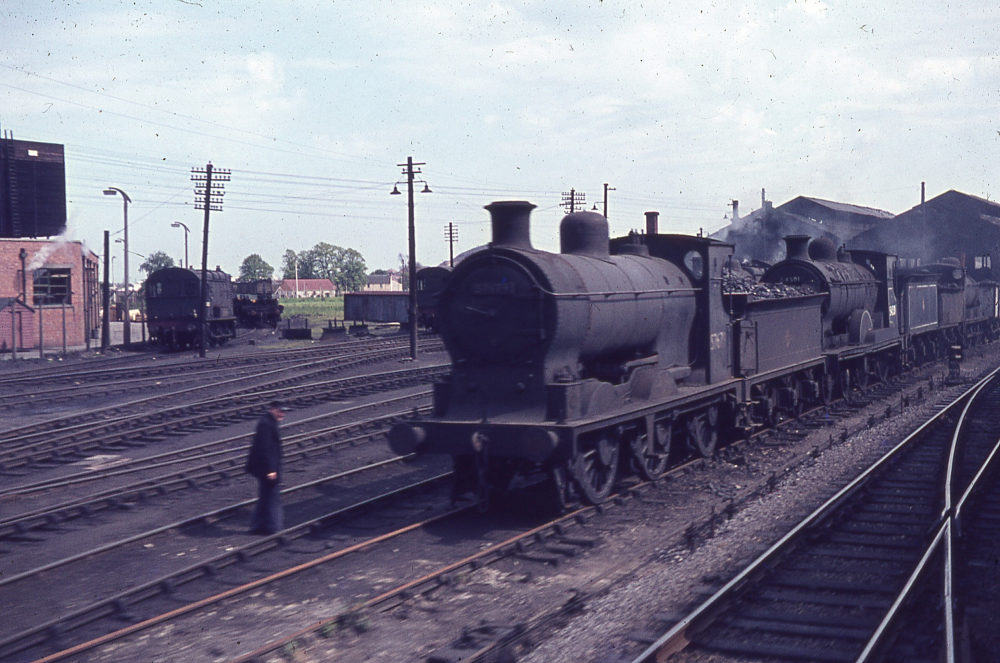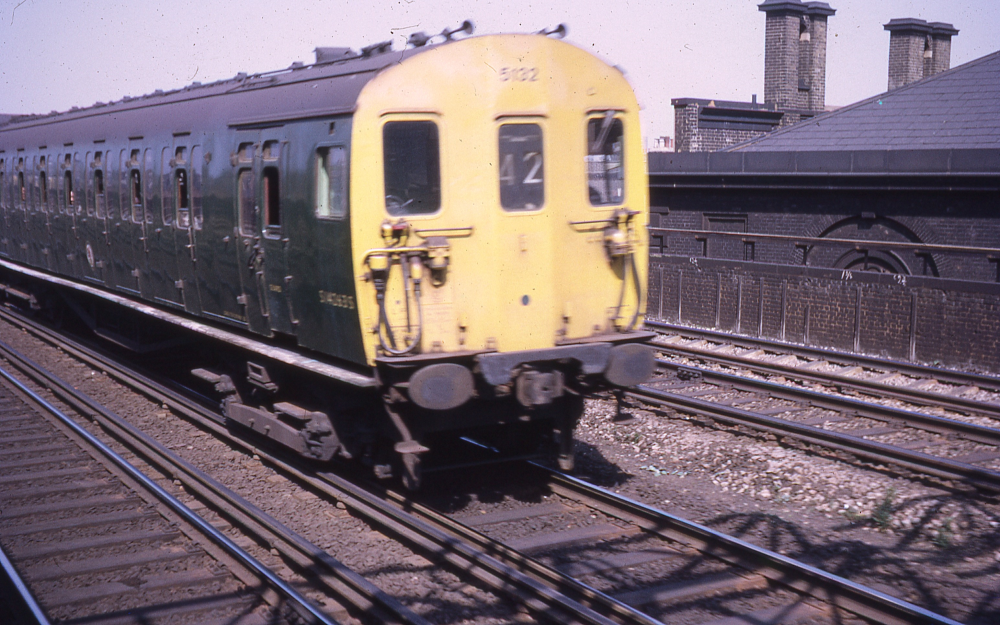-
Posts
15,859 -
Joined
-
Last visited
-
Days Won
393
Content Type
Profiles
Forums
Events
Gallery
Everything posted by jhb171achill
-
IRM At The Dublin Show 2022 - Just What Will We Announce?
jhb171achill replied to Warbonnet's topic in News
Powered Fintona horse. 4-wheel drive, eco-friendly fuel. -
Dear Santa I have been very good since last year……………………………… …………………………..
-
Maybe they’ll put a Thomas face on one, because, that would be like, awwwsum, and there’s a steam train thing up in Dublin that’s blue…..!
-
Superb!
-
British stuff from the Catacombs
jhb171achill replied to jhb171achill's topic in British Outline Modelling
Fair enough! As I say, I’m not well up on things BR! -
Ah, indeed, you’re 100% right!
-
The van behind the loco is an old GNR standard covered van, behind which 9and to the right of it) are standard CIE "Bullied" corrugated open wagons. These will have come northvia the North Wall - Dundalk goods leaving them in Dundalk, and the Dundalk - Belfast (Grosvenor Road) goods dropping them at Porteedown. On the far left is a fitted parcels van of "Y" class, repannelled in planking by the UTA.
-
British stuff from the Catacombs
jhb171achill replied to jhb171achill's topic in British Outline Modelling
In haste, as I'm en route to the west today...................... a port scene. I wonder if any of those Mk 1 vans are among those that ended up as CIE gennies! Again, unsure of date and location; mid to late 1960s. -
Absolutely stunning - as always.
-
British stuff from the Catacombs
jhb171achill replied to jhb171achill's topic in British Outline Modelling
-
jhb171Senior used to make an annual trip to various parts of Brexitstan with the Permanent Way Institution. He started taking colour slides about 1961 or 2 - over the next while I will post some of the pics he took. Few in number, but interesting. With scant knowledge of railways on that island, I cannot give much (if ANY) information about any of what will follow, but feel free! Here, a green electric train, but with full yellow end pending, one presumes, a full repaint into BR blue. Presumably London? Mid 1960s - exact date unknown.
-
This is true. I was contacted by one of the researchers at one stage, but unknown to me it was a bit late in the day. I sent her a load of stuff about the Achill and (I think) Clifden lines, along with references to youtube clips, stuff in the IRRS and so on, and information on who to contact in order to get copyright / reproduction approval. She thanked me and rang me up. She asked me a number of questions which I answered, all the while becoming more and more bemused / horrified by her utter lack of knowledge AFTER she had claimed to have researched stuff herself. She was unaware, for example, that Irish railways were never part of British Rail - and she was from Belfast! She was unaware of the meaning of the word "gauge" and did not understand why Donegal's trains could not operate through to Belfast or Dublin. And so on; now; as a "layman" (or "laywoman"), one cannot blame her at all for that as far as it goes; much of the public would be the same - and why not - a "normal" person, as opposed to us enthusiasts (!) sees a train as a thing to get them to work, or to Athlone to visit yer wan the odd time - and cares not one whit whether it's a Craven, an 80 class or an ICR in an incorrect GSWR livery. But this lady claimed to me that she had already DONE "extensive" research. Ennnnnyway; I told her all about the Achill line, and ended by saying, in jest "as long as you don't trot out that tired old tale about "the first and last trains carrying the dead". As readers here will know, the first bit of it is coincidentally true, but (a) the prophesy oft misquoted never said anything about any railway at all, and (b) the 1937 train carrying the dead happened a good two weeks before closure. Sure enough, Inda even adds to this, courtesy, no doubt of our "researcher"; as well as the "last" train carrying the dead, he claimed that the line had already been closed since 1934 and was reopened specially - as well as saying that it was narrow gauge, as well as a few other howlers. And whose name appears in the credits as "research"? Yup - mine. To paraphrase an ancestor of King Big Ears; I was "not amused"!
-
THAT's the one. Just look at the artistic detail on it too - the scenic detail, the ultra-realistic weathering of wooden bodied wagons, and so on. Pristine goods stock ancient and modern alike always looks to me to be far too toy-like - it's like a model of a gleaming shiny JCB in the middle of a model of a very muddy building site!
-
Not the first time, evidently, that Hornby have ridden on the coat-trails of someone else's initiative. However, maybe IRM will be the first with Irish TT stuff! There was a layout in 3mm scale, which I am sure many here will be familiar with - I just can't remember it's name. It was based on a GNR line somewhere on the INWR section or Derry Road, and was simply a circle of track. It was on display at several exhibitions in those idyllic far off days before covid, trump, putin, johnston, brexit and inflation. For such a small scale, the standard of modelling both of the models, the railway and the surrounding scenery was quite simply unbeatable - absilutely the best. This shows what's possible in this scale. Personally, I think that close up, N gauge is just getting that bit TOO small - especially as scale track in that gauge would need to have rails as thin as fuse wire - and the couplings are a scale 5 feet long, I'm sure (not that traditional 00 ones are great, either!) But that little GNR layout was one of my favourites ever.
-
JM Design no longer accepting orders for 3D printed wagons
jhb171achill replied to Mayner's topic in JM Design
Sorry to hear that. As owner of several JM design items, I can say that i am extremely pleased with them. Hopefully something might be sorted out. -
This precisely why I witter on about such things as liveries. When a museum restores an artefact of any sort, the public have an expectation that how it appears on display is how it looked in real life. It's easy to say "sure, you can always repaint it", or "the survival of the thing is what's important, not the colour" - or that tired old canard, "different people see different colours". But if we look at things we're familiar with today, like a DART, imagine, if in 70 years' time, there's one in a museum somewhere, and through lazy lack of research it's painted up in black and tan - those of us who SEE these things every day have very justifiable reason to rasie our eyes heavenward and say "WHY could they not have just got it right"! The other thing often heard, and when a volunteer on carriages 45 years ago I said it myself "If you don't like it, roll your own sleeves up and give a hand!" just doesn't wash in this case. When we see the magnificent job done by the RPSI with 131, 85 and 171, and NCC No. 4, it is both easy and justifiable to point out not one, but two repainted Donegal engiens with black domes instead of red - SO easy to get right; and with the single exception of the grey currently worn by 186, never once an authentic livery on an ex-GSR loco - neither it, 184 or 461, or the Derry shunter "Harvey" as, well, unfortunate. Not to mention the "Ivan"; an eye-confusing assault on the senses of black lines, as all the ironwork is thus picked out, or the DCDR's equally unfortunate run of incorrect livery on every goods item it has ever restored, plus a green G611. Cultra is not exempt. The BCDR tank, No. 30, is in an Isle of Man-esque apple green. Attractive though it is, the green is many shades too light; colour photos as well as personal memories will show that the BCDR green was so dark it almost looked black. They've added black paint to the metal parts of an otherwise-original Donegal open wagon, and let's not go into the C & L and Castlederg coaches, with modern plastic stick-on lettering. I am always impressed by the great lengths that most preservation organisations - museums especially - go to in Brexitstan to get such easy-to-research details spot-on correct; maybe we, over here, just don't care! Yes, yes, yes, I know - not everyone cares. But does anyone want to see a yellow, brown and red ICR in a museum in 2077? Now, of course, the disclaimer: I've been the volunteer with the paint pot, when money dictates nothing else is available. But that ain't the above case. So I always respect volunteers, let me make that VERY clear. But please, research liveries - it is VERY easy. Rant over. I need me cocoa.
-
Couldn't agree more! Great scale, great models, truly awful interviewer and interviewee.................
-
I think anyone trying to set the record straight on ALL of the errors in every single episode would have a herculean job to do! It has to be one of the single worst-researched programmes in Irish TV history. Truly awful.
-
Sorry, forgot to add that! Hotel Newport, at the top of the street. Here are the details: https://www.eventbrite.ie/e/newport-300-history-weekend-tickets-421825420187
-
If anyone is bumbling about in the Newport area this weekend, I will be doing a talk on the Achill line as part of it on the Saturday. Throughout the weekend there will be a number of talks by various people on different historical and cultural topics relating to the area. Unlike Indakinny, I will neither be claiming that the line was narrow gauge, nor that it was specially reopened to carry the dead in 1937!
-
Rare to get one of it parked on its end, Jim................
-
Superb!! But - have we set a stopwatch to see how long before it’s vandalised?
-
Wexford Model Railway Club Autumn Exhibition 9th October 2022
jhb171achill replied to Irishrailwayman's topic in What's On?
I’ll be there! -
Very good thinking indeed - or donor chassis for 141s in that scale? It's interesting to look at my own available layout space and imagine what extra could have been included at 3mm scale. It's probably an ideal scale for portable mini-shunting layouts.
.png.c363cdf5c3fb7955cd92a55eb6dbbae0.png)







